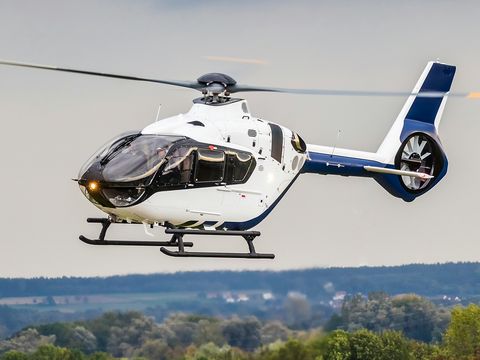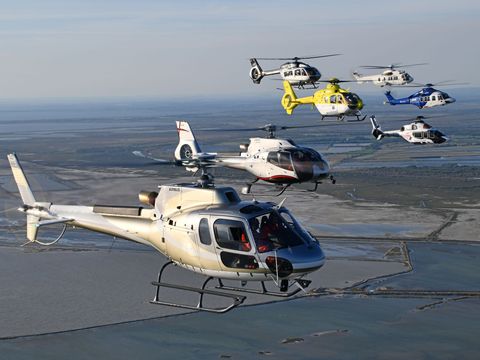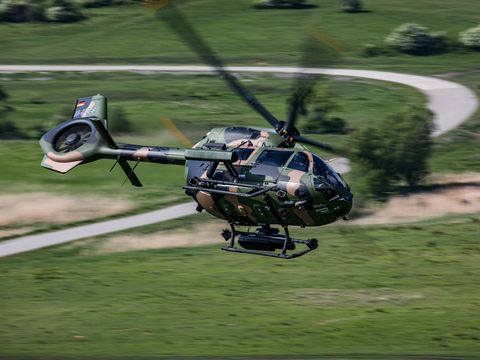H135
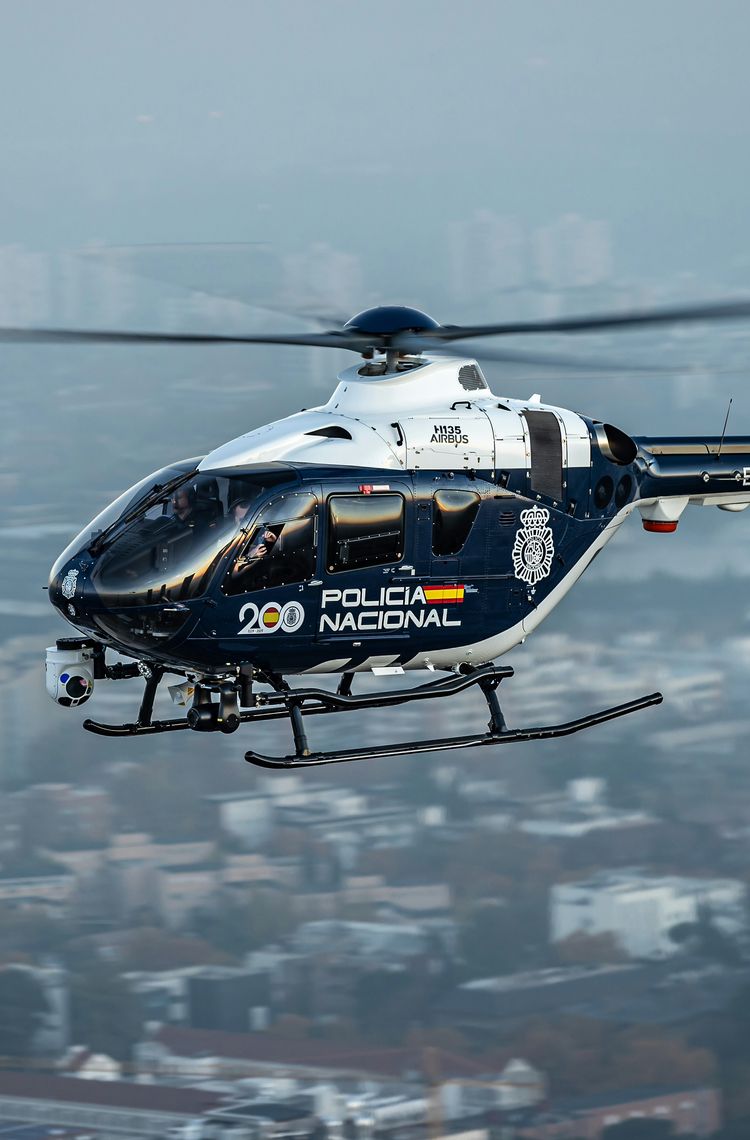
Introduction
Backed by experience and a long heritage, more than 1440 helicopters of the H135 family in service in more than 60 countries. With over 300 operators, these versatile rotorcraft have clocked more than 7.6 million hours.
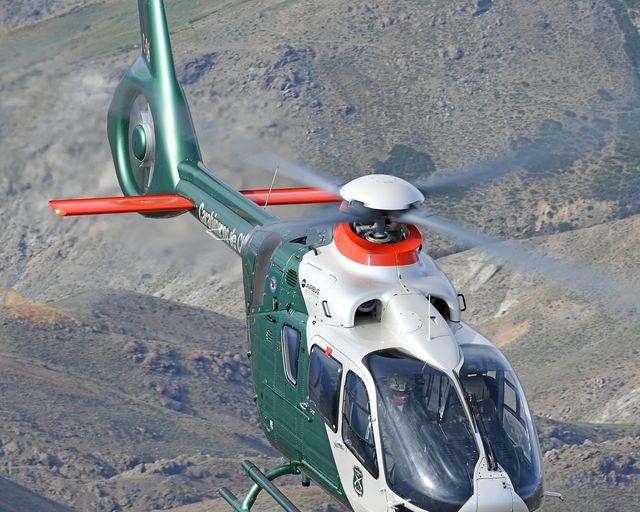
An outstanding performer
Fitted with a bearingless main rotor, Airbus’ signature Fenestron® shrouded tail rotor, engine software modifications, and a new lateral air intake, the H135 provides additional payload and delivers best-in-class performance throughout its flight envelope.
Two full authority digital engine control (FADEC)-equipped engine options are available: Safran Helicopter Engines’ Arrius 2B2 Plus and Pratt & Whitney Canada’s 206B3. Both of these reliable turboshaft power plants provide outstanding performance and vital power reserves – even in one engine inoperative (OEI) scenarios – along with low fuel consumption.
As one of Airbus’ most successful lightweight rotorcraft, the H135 is known for its endurance, compact build, low sound levels, reliability, versatility, and cost-competitiveness. The H135 comes with the lowest operating and maintenance costs within the twin-engine category. It also can perform varied missions, and can land almost anywhere, particularly in high and hot conditions, while carrying more payload over longer distances than other helicopters in its category.
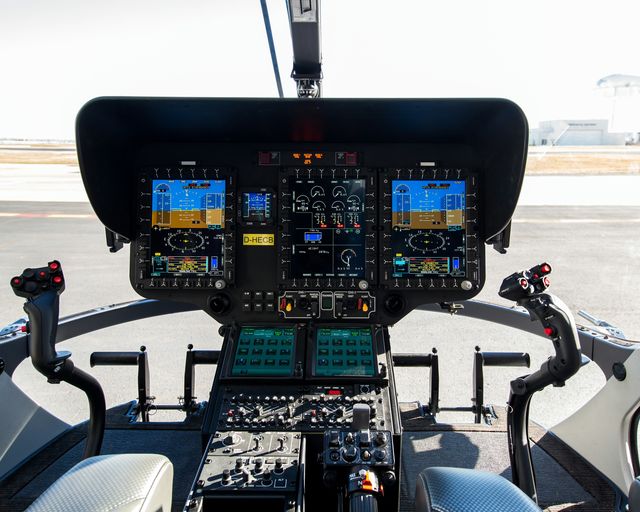
Enhanced safety and discretion
The H135’s state-of-the-art cockpit with its new 4-axis autopilot provides the highest-possible safety levels. The Helionix® avionics system designed by Airbus offers operators undisputed superiority for in-flight envelope protection, pilot assistance and situational awareness – resulting in unprecedented flight safety levels. The new Helionix® also is available on the H145, H175, and H160.
Further contributing to operational safety are the rotorcraft’s high-set main rotor and the Fenestron® shrouded tail rotor. They provide enhanced safety margins to the pilot and improved performance even in one engine inoperative scenarios.
As one of the quietest twin-engine helicopters, the H135’s sound footprint is markedly lower than that of other rotorcraft in the same category - an asset for customers operating in densely populated areas.
The H135 is authorised to fly in the United States’ Grand Canyon, which has one of the country’s most stringent noise limitations.

Ready to fly
The H135’s simple design makes maintenance fast and easy, ensuring reliable dispatch, less down time and lower operating costs.
The H135 is the benchmark for maintenance costs, thanks to its long inspection intervals, intermediate inspection at 500 flight hours, and periodic inspections every 1,000 hours or three years.
With the lowest direct operating costs of any twin-engine rotorcraft, the H135 is the most attractive helicopter to operate in its class.
The H135 accommodates a night vision imaging system (NVIS), and can be fitted with a night vision goggle (NVG)-friendly cockpit, cabin layouts and exterior lighting.
Its high level of availability and easy maintenance assists the H135 in such autonomous operations as helicopter emergency medical services (HEMS), where a technician may not be located on base or stationed nearby
The latest on the H135
-
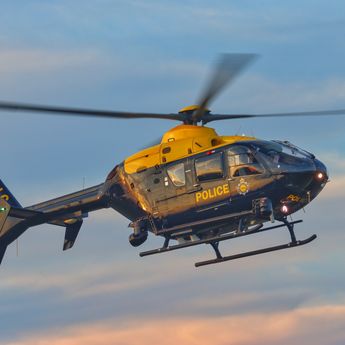
UK National Police Air Service orders seven Airbus H135s
Press Release
Helicopters
Airbus Helicopters has been selected by the UK’s National Police Air Service (NPAS) to supply seven H135 helicopters as the initial phase of its fleet renewal programme. -

Air Methods expands fleet with Airbus, including H140 helicopters
Press Release
Helicopters
-
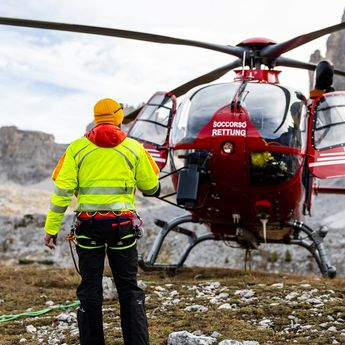
Airbus supports public safety in South Tyrol
Web Story
Company
-
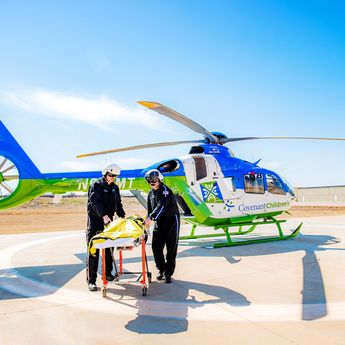
Global Medical Response orders 28 Airbus helicopters in fleet expansion
Press Release
Helicopters
-
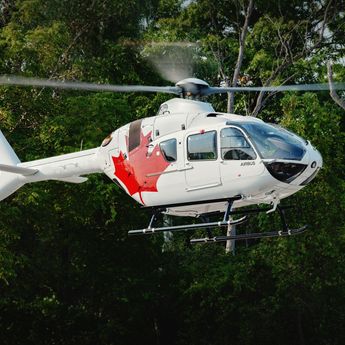
Airbus signs historic contract to provide 19 H135 military training helicopters to…
Press Release
Helicopters


